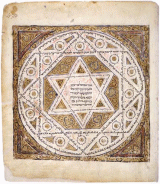
, philosophy
, and way of life" of the Jewish people
. Originating in the Hebrew Bible
(also known as the Tanakh
) and explored in later texts such as the Talmud
, it is considered by religious Jews to be the expression of the covenantal relationship God
developed with the Children of Israel. According to Rabbinic Judaism
, God revealed his laws and commandments
to Moses
on Mount Sinai
in the form of both the Written
and Oral Torah
. This was historically challenged by the Karaites
, a movement that flourished in the medieval period, retains several thousand followers today and maintains that only the Written Torah was revealed.
Mankind, East and West, Christian and Muslim, accepted the Jewish conviction that there is only one G-d. Today it is polytheism that is so difficult to understand, that is so unthinkable.![]()
It is against their own insoluble problem of being human that the dull and base in humanity are in revolt in anti-Semitism. Judaism, nevertheless, together with Hellenism and Christianity is an inalienable component of our Christian Western civilization, the eternal "call to Sinai" against which humanity again and again rebels.![]()
Throughout our history there have been weaker elements who have shirked the sacrifices which Judaism entailed. They have been swallowed, long since, in the great majority; only the more stalwart have carried on the traditions of their ancestors, and can now look back with pride upon their superb heritage. Are we to be numbered with the weak majority, or with the stalwart minority? It is for ourselves to decide.![]()
Most firmly hold and never doubt that not only pagans, but also all Jews, all heretics, and all schismatics who finish this life outside of the Catholic Church, will go into the eternal fire prepared for the devil and his angels.![]()

